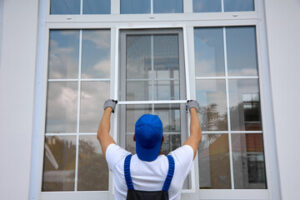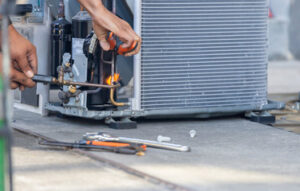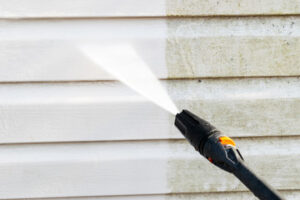Windows are a place where errors can be costly, especially when it comes to energy efficiency. Improper measurements can result in air leaks, water infiltration, and a lack of a barrier between your home and the weather.

Energy efficient options are available for all types of homes. Some examples include double-pane windows, which reduce heat transfer by 37% and Low-E glass that prevents carpets and upholstery from fading. Contact Window Replacement Ellicott City, MD for professional help.
The windows in your home play a critical role in keeping your home comfortable. When they leak air or allow heat to escape, your home’s heating and cooling system has to work harder to keep your home at a set temperature, increasing energy costs. New replacement windows with better insulation can help to reduce your energy consumption and lower your utility bills.
The type of window and frame material will greatly affect the performance of your windows. Advanced materials like vinyl and fiberglass are excellent insulators, helping to prevent drafts and air leakage. They also have superior durability, ensuring your windows will last for the lifetime of your home. Wood frames are another option, but require more upkeep and can be susceptible to warping and rot.
When selecting a new replacement window, look for a label with an NFRC (National Fenestration Rating Council) or Energy Star rating. These ratings are designed to provide homeowners with unbiased, accurate information about the performance of each window. The Energy Star program sets stringent standards that manufacturers must meet to be eligible for the label, ensuring that any windows with the Energy Star logo have been tested and proven to be more efficient than standard products.
Other features that improve window efficiency include low-emissivity coatings and gas fill spaces between the panes of glass. These coatings reflect sunlight and heat, reducing the amount of UV light that enters your home, which helps to protect carpets, furnishings, and other fabrics from fading. In addition, double or triple pane windows are more energy efficient than single pane windows.
Proper installation is also important for ensuring the performance of your new windows. A professional installer will ensure a tight fit and proper operation. They will also install weatherstripping and caulk to prevent drafts, leakage and air infiltration. Choosing a professional contractor for window replacement will help you to avoid costly mistakes that can affect your energy savings.
If you’re interested in upgrading your home’s energy efficiency with new replacement windows, Brennan Enterprises can help! We offer a wide variety of styles and finishes to complement any home’s design. Contact us today to book your no-pressure in-home consultation.
Durability
When a window needs replacement, there are a variety of options that will improve its function and increase its durability. Whether you choose to invest in double or triple pane glass, wood, vinyl or fiberglass frames, you can rest assured that your new windows will last on average for 15-50 years. They will be affected by the weather, how often they are opened and closed and how they are maintained, but the quality of materials used is key to their longevity.
A window’s lifespan can be enhanced with regular maintenance, including lubrication of moving parts and periodic cleaning. Adding an acrylic sealant or silicone spray to tracks, hinges and locks can prevent corrosion and make your windows easier to open and close. Inspecting the frame and sash for damage or warping is also important, as it can lead to air leaks and moisture penetration, which are both inefficient and unsightly. Using a defogging spray and ventilating your home regularly can help address moisture issues, but if the problem persists, a full replacement may be necessary.
Choosing to replace your windows can save you money in the long run by reducing energy costs, minimizing water damage and improving indoor comfort. However, the upfront cost of a new window can be daunting for some homeowners. Many companies offer 0% financing or other incentives to drive business during lean times, so be sure to ask about these options. You can also use a cash-out refinance on your mortgage or use credit cards to spread the cost over time.
There are three types of replacement windows: sash kits, insert replacements and full-frame units. Sash-replacement kits (like the ones Tom installed on the Newton house) provide new movable parts for older frames, including jamb liners and sash. They are fastened to the side jambs of the existing window frame and slid in between. For these to work, the existing window frame must be square and level. Otherwise, the sash will rub against the frame and cause damage over time. If you’re considering sash-replacement windows, check the squareness of your frame by measuring diagonals from corner to corner. If the frame is out of square, you’ll need to consider a full-frame replacement.
Style
Choosing the right replacement windows will impact your home’s comfort, style and energy efficiency. That’s why homeowners should consider their ventilation requirements, aesthetic preferences and budget before selecting a window type.
There are many different window styles to choose from, each with varying features and benefits. Some offer greater ventilation, while others maximise natural light and provide enhanced security. It’s important to partner with a local window company that understands your climate and can advise on the best options for your home.
Single-hung windows, which have one operable sash that slides up or down, are still widely used. Double-hung windows, which are more versatile and have two operable sashes, are also available. These are popular choices because they blend well with both traditional and modern homes. Sliding windows, which glide open from side to side, are another option that’s ideal for a wide range of applications. They’re particularly good in areas with limited space because they don’t require a swinging opening to operate.
Bay and bow windows, which protrude from the wall, are another popular choice that can add significant architectural character to a room. They’re also great for bringing more natural light into rooms with limited space.
Casement windows, which can be cranked open like doors, are a popular choice for kitchens and other hard-to-reach areas that require excellent ventilation. Tilt and turn windows are a contemporary alternative that offer both ventilation and security in a stylish design.
Window replacement installation can be a simple, cost-effective process or more extensive and expensive, depending on the existing condition of the window frame, casing, trim and siding. Pocket window replacement, which involves fitting the new window into the existing frame, is a less invasive option that allows for customization and provides opportunities to address underlying issues. Full-frame window replacement, on the other hand, involves removing the entire frame, sash and trim and replacing them with an entirely new unit. This method can be more expensive but offers the opportunity to completely overhaul the look and feel of a room. It also ensures a seamless fit and maximum glass area for unobstructed views and natural light.
Maintenance
Window replacement is a significant investment, but one that will pay off in increased home value and energy savings. To get the most out of your new windows, consider your options for maintenance and upkeep.
The first step in keeping your home’s windows looking great is regular cleaning. Windows accumulate dirt, dust and debris that makes them look shabby and reduces functionality. A damp cloth or cleaner should be used to wipe away the build-up. Cleaning also helps identify any issues with the window’s seal or glass, such as a crack or chip.
Other signs that windows need attention include condensation, leaking and fogging. These problems indicate a compromised seal, which can lead to moisture penetration and negatively affect your window’s insulating capabilities. Additionally, drafts and cold spots around windows may result from a gap or opening in the window’s frame that allows air to escape. Adding weather stripping or caulk to these areas can help prevent energy loss and save you money on your heating and cooling bills.
Leaking windows can cause severe water damage to your property, including rotting wood and molding flooring. This problem can be very expensive to repair and can spread throughout the house if left untreated. Replacement of a faulty window with an efficient, leak-proof model is a good investment in your rental’s long-term health.
If you do decide to replace your existing windows, it’s important to choose an experienced, reputable contractor that offers quality products and service. A qualified professional will carefully remove your existing window sash from the frame, taking care not to damage the surrounding wall or trim. They will then install the new window into the frame, making sure it’s properly aligned and leveled.
When you’re ready to transform your property with window replacement, contact the experts. They’ll help you select a replacement option that meets your budget and lifestyle, while improving the aesthetics of your home. They will also help you prepare your interior space for installation by removing wall decorations, clearing furniture and creating a staging area. They’ll even manage your kids and pets during the process to minimize stress and potential injury.



